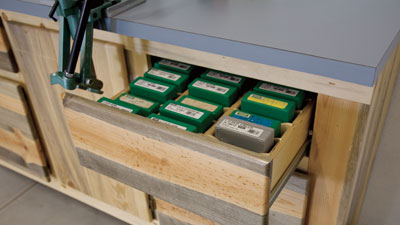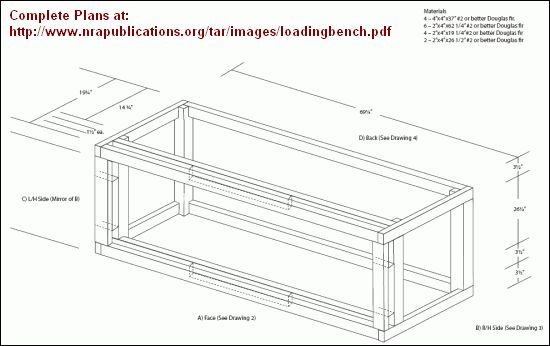|
|
November 5th, 2017

Carbon fiber offers superior stiffness/strength with ultra-light weight. That’s why you see carbon-fiber components in F1 race cars and fighter jets. Carbon fiber composites are widely used in modern aircraft, where the composites’ superior strength-to-weight ratio far exceeds that of metal. While 30% of all carbon fiber is used in the aerospace industry, carbon fiber is also used in high-tech bicycle frames, golf clubs, and archery equipment. Carbon fiber composites are used wherever high strength and low weight are “mission critical”.
Now carbon fiber is being used in rifle optics. Kruger Optical has released the all-new KC6™ carbon fiber riflescope series. We believe this is the first production use of carbon fiber composites in rifle optics main tubes. Two KC6™ models are currently offered, a compact 1-6x24mm weighing 16 ounces, and a 3-18x50mm weighing 26.5 ounces. Both scopes are illuminated, with Second Focal Plane reticles, and “Zero-Stop” turrets. Sorry, we don’t have pricing yet. KC6™ SPEC Sheet.
At 26.5 ounces, Kruger’s 3-18X model, with 34mm main tube, is lighter than many optics in its class. For example the Vortex Razor HD GenII 3-18x50mm weighs 46.5 ounces — twenty ounces more than the Kruger. However, the new Leupold VX6-HD 3-18x50mm weighs only 20.4 ounces, six ounces LESS than the carbon Kruger. Cogitate on that. It seems that an overall compact design may deliver more weight savings than a carbon fiber main tube. But we still like Kruger’s innovative use of carbon composite technology. We envision a time when carbon is more widely used in a variety of key rifle parts, not just optics.
Weight Comparison, Carbon vs. Aluminum
Kruger KC6™ 3-18x50mm (Carbon Main Tube): 26.5 ounces
Leupold VX6-HD 3-18x50mm (Aluminum Main Tube): 20.4 ounces
Vortex Razor HD GenII 3-18x50mm (Aluminum Main Tube): 46.5 ounces
Kruger states: “Using a proprietary and patent-pending process, we’ve created an elite product that’s significantly stronger and lighter than traditional aluminum scopes. Kruger has spent more than five years making the KC6™ Series a reality. Due to the unique strength properties of carbon fiber, our patent-pending KC6™ scopes are notably lighter, stronger and more durable than traditional 6X riflescopes.”

Image shows materials from Composite-Resources.com.
Incorporating carbon fiber technology used in fighter jets and race cars, the Kruger KC6™ scopes offer a distinctive appearance — the visible weave of carbon strands. Kruger claims these U.S.-engineered scopes offer excellent image clarity, plus “exceptional low-light performance”. We’d like to test one of these Kruger scopes to see how it compares to premium optics with conventional aluminum main tubes.
New Product Tip from Boyd Allen. We welcome reader submissions.
November 5th, 2017

 Craters may look interesting on the moon, but you don’t want to see them on your primers. Certain mechanical issues that cause primer craters can also cause primer piercing — a serious safety problem that needs to be addressed. If you have a gun that is cratering primers (even at moderate pressure levels), there is a solution that works with many rifles — send your bolt to Greg Tannel to have the firing pin hole bushed. CLICK HERE. Craters may look interesting on the moon, but you don’t want to see them on your primers. Certain mechanical issues that cause primer craters can also cause primer piercing — a serious safety problem that needs to be addressed. If you have a gun that is cratering primers (even at moderate pressure levels), there is a solution that works with many rifles — send your bolt to Greg Tannel to have the firing pin hole bushed. CLICK HERE.
Shooters who convert factory actions to run 6BRs, 6PPCs or other high-pressure cartridges should consider having the firing pin bushed. These modern cartridges like to run at high pressures. When running stout loads, you can get cratering caused by primer flow around the firing pin hole in the bolt face. The reason is a little complicated, but basically the larger the hole, the less hydraulic pressure is required to crater the primer. A limited amount of cratering is normally not a big issue, but you can reduce the problem significantly by having a smith fit a bushing in the firing pin hole. In addition to reduced cratering, bushing the firing pin often produces more consistent ignition.
This is a highly recommended procedure that our editors have had done to their own rifles. Greg Tannel (Gre-Tan Rifles) is an expert at this procedure, and he does excellent work on a wide variety of bolts. Current price for a bushing job, which includes turning the firing pin to .062″, is $80.00, or $88.00 with USPS Priority Mail return shipping.
If you have a factory rifle, a bushed firing pin is the way to go if you are shooting the high-pressure cartridges such as 6PPC, 6BR, 6-6.5×47 and 6.5×47. This is one of the most cost-effective and beneficial upgrades you can do to your factory rifle. For more info on the Firing Pin Bushing process, visit GreTanRifles.com, or email greg [at] gretanrifles.com. (After clicking the link for GreTanRifles.com, Click on “Services” > “Shop Services” > “Bolt Work”, and you’ll see, in the lower left, a listing for “Bush Firing Pin Hole & Turn Pin”. Click on that box.)
 Firing Pin Hole Bushing by Greg Tannel Firing Pin Hole Bushing by Greg Tannel
Work Done: Bush firing pin hole and turn pin.
Functions: Fixes your cratering and piercing problems.
Price: $80.00 + $8.00 return shipping
Total Price: $88.00
Actions for which Bushing is Offered: Remington, Winchester, Savage multi-piece pin, Sako, Kimber, Nesika, Stiller, BAT Machine, Kelbly, Lawton, Surgeon, Borden, Wichita, Hall, Ruger, Howa, Weatherby, Dakota, Pacific Tool, Phoenix, and Defiant bolt action rifle or pistol.
Actions for which Bushing is NOT Available: Case hardened receivers, ARs, Accuracy International (AI), Barnard, Big Horn, Cooper, Desert Tactical Arms, Kimber, Rosenthal, New Savage single piece pin, Rim fires, Falling block, Break open, Lever, Pump rifles, 1903-A3, CZ, Mauser.
How to send your bolt in to be bushed:
You can send your bolt snail mail, priority mail, or UPS (Please do not use FEDEX as it sometimes has delivery delays). Pack your bolt carefully and ship to: Gre’-Tan Rifles, 24005 Hwy. 13, Rifle CO 81650. Please include your name, phone number, and return shipping address.
Due to the high volume of work, turn around is 5 to 8 weeks on bushing a bolt. Three or more bolts will be sent back to you UPS and we will have to calculate shipping. We can overnight them at your expense. You can pay by check, money order, or credit card. For more information visit GretanRifles.com.
November 5th, 2017

A while back, the American Rifleman magazine published an excellent article showing how to construct a rock-solid Reloading Bench. This bench is very well-designed, with many deluxe features, such as an upper drawer with fitted slots for die boxes, and large lower drawers with 100-lb rated slides to store heavy materials or tools. If you have good wood-working skills this would be an excellent project. You can download a detailed set of Bench Blueprints showing all dimensions and listing all needed materials.
CLICK HERE to Download Article with Photos | CLICK HERE for Bench Blueprints



The author, Dave Campbell, offers good advice on building the bench top: “I ripped a sheet of 3/4″ AC plywood into two 24″ wide pieces and cut them to 72″ long. Then I glued them together to form a 72″ long, 1 1/24″ thick top. The trick here is to keep the edges smooth and flat so that the laminate will adhere properly and without voids. I chose a light grey laminate finish for the top because it’s easier to see what I am working on and keep clean. If you have never worked with laminate, remember it’s prudent to glue and rout the edges flush before gluing on the top. The top was attached to the carcass with eight steel L-shaped angle brackets and No. 10×1 1/4″ wood screws.”
Photos Copyright © 2008 The National Rifle Association, used by permission
|















 Craters may look interesting on the moon, but you don’t want to see them on your primers. Certain mechanical issues that cause primer craters can also cause primer piercing — a serious safety problem that needs to be addressed. If you have a gun that is cratering primers (even at moderate pressure levels), there is a solution that works with many rifles — send your bolt to
Craters may look interesting on the moon, but you don’t want to see them on your primers. Certain mechanical issues that cause primer craters can also cause primer piercing — a serious safety problem that needs to be addressed. If you have a gun that is cratering primers (even at moderate pressure levels), there is a solution that works with many rifles — send your bolt to  Firing Pin Hole Bushing by Greg Tannel
Firing Pin Hole Bushing by Greg Tannel








